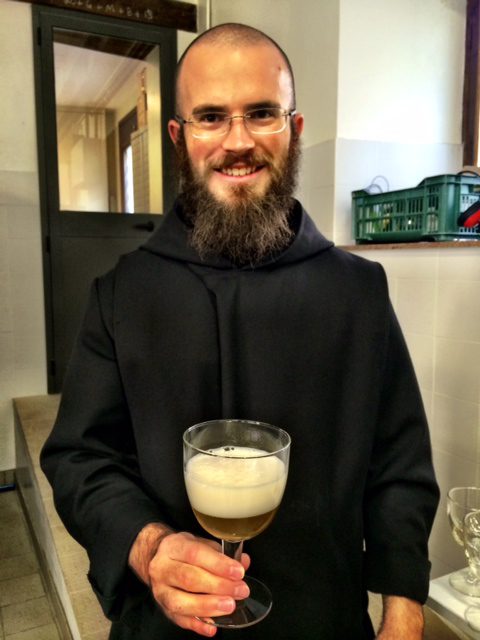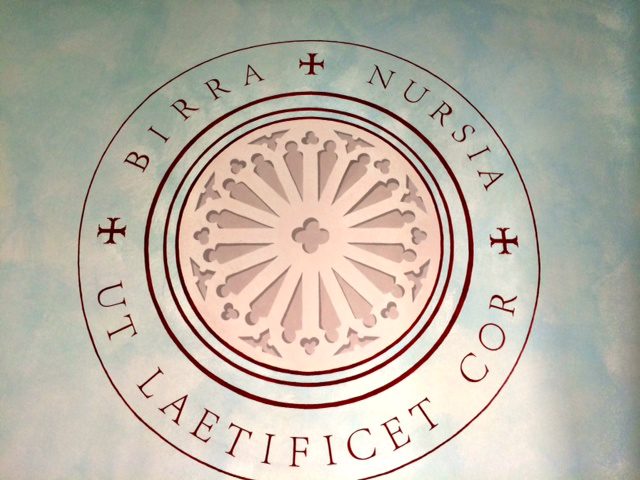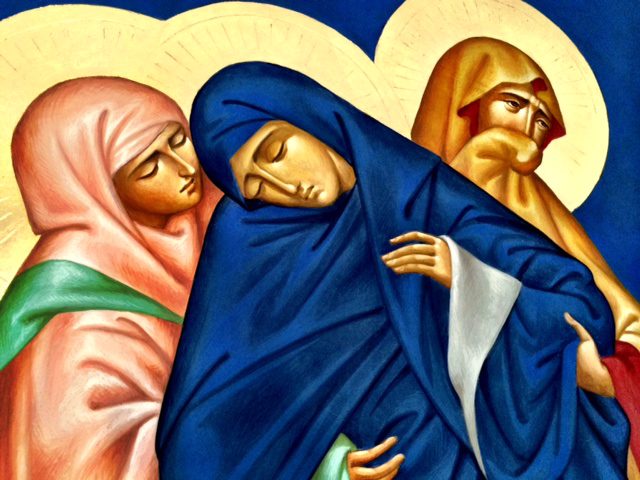The Benedictines of Norcia

It’s late tonight in Rome, and Casella and I are about to head to our beds. Early taxi ride in the morning to the airport for the flight home. I have so much to write about — I haven’t even told you about going to Dante’s grave — but it will have to wait until I am back home over the weekend. It was so moving to me that I haven’t been able to find the words for it.
I’m scarcely able to find the words to tell you what a spiritual gift it was to spend time in Norcia praying with the monks on the site of St. Benedict’s birth, but I simply cannot fall asleep without telling you some of the story.
Norcia was an add-on to our Dante pilgrimage. I wanted to see St. Benedict’s birthplace and to pray there, and that was fine with Casella, who, as a practicing Catholic, was not one to turn down visiting Norcia (especially because the town is known for its charcuterie). What neither of us expected was that our day and a half in Norcia would be one of the most powerful spiritual experiences of our lives.
The monks of Norcia are Benedictines who pray the old mass, and who chant the hours in Latin. To be in their basilica during mass or the hours is like stepping into another century. To describe it as aesthetically rich and spiritually nourishing hardly does the experience justice.
But to really understand what’s happening in at St. Benedict’s Monastery in Norcia, you have to talk with the monks. Except for the prior, Fr. Cassian, they are all young men. And they are easygoing, gentle, and luminous. They radiate joy. Casella and I could hardly believe that a monastery like this exists. To talk with them about their lives as Benedictines, and how and why they came to embrace the monastic calling, was a profound grace. It came out in the simplest things, too. Here is Father Martin, a native of Fredericksburg, Texas, and the manager of the monastery’s brewery:
 Three monks brew all the beer (and it’s excellent beer too!). I asked Fr. Martin how brewing beer serves the Church. He said that you’d be surprised by how many people who aren’t especially interested in Christianity taste the beer and find that it really tastes good. Then they want to know more about how it’s made, and sooner or later, some of them want to know about the faith. Besides, he said, drinking beer makes the heart glad. That’s why the slogan of Birra Nursia is:
Three monks brew all the beer (and it’s excellent beer too!). I asked Fr. Martin how brewing beer serves the Church. He said that you’d be surprised by how many people who aren’t especially interested in Christianity taste the beer and find that it really tastes good. Then they want to know more about how it’s made, and sooner or later, some of them want to know about the faith. Besides, he said, drinking beer makes the heart glad. That’s why the slogan of Birra Nursia is:
“That the heart might be gladdened.” When people have glad hearts, they are more willing to share those hearts with each other. That’s the monks’ idea, and it’s a good one. Here’s a commercial for their beer; those are the real monks, and their real monastery and brewery:
We talked about beer, but mostly we talked about the life of prayer. A new novice, Brother Philip, saw my Orthodox prayer rope, and said, “Keep praying the Jesus Prayer” — and pulled his prayer rope out of the pocket of his habit. I told the monks a bit of my story, about how I became Orthodox. There was no sense of judgment or hardness toward me for having left the Catholic Church. In fact, one of them kindly pointed out that they have a great deal of respect for Orthodoxy, and how valued monasticism is within the Orthodox tradition. He added that within their monastery, they are trying to do more reading in the Desert Fathers, which are the shared heritage of both the Eastern and Western churches.
Father Martin showed us the refectory, where we saw a young Italian artist hard at work painting frescoes. Here is a detail from one of his frescoes. It looks so Byzantine, but also Umbrian:
There was such a sense of brotherhood and peace among those men. Father Martin told us, as did the prior, Father Cassian, a day earlier, that it all comes from a life of prayer. I kept thinking: Anybody who despairs of the Church, or of their spiritual lives, should come to Norcia. This monastery and basilica glows with peace and joy. It is, as I said yesterday, both a lighthouse and a stronghold. More people should know about this monastery. I don’t know what exactly they are doing, but the spiritual fruits of their community are palpable. They are gaining so many vocations that they are outgrowing their small quarters. We read and hear about so many defeats for the Church these days, but in the mountains of Umbria, the faith is winning.
You need to go see this place for yourself. If you can, make a retreat there. Casella and I hated to come down off the mountain today, but we have a plane to catch in the morning. Tonight we walked around Rome and visited some of the great churches of Christendom, but all we could think about was the monks of Norcia, and wishing we were back there with them.
We will be some day, one hopes with our families. We promised each other that we will pray every day for those monks. A moment ago, we agreed that just being with the Norcia monks for a day, and praying in that holy place, made us want to be better Christians, better husbands and fathers, and better men. St. Benedict’s Monastery is that kind of place.
More people should know about it. More people should go there. More people should be praying for these monks and helping them out any way that’s possible. The light of the world shines especially bright in St. Benedict’s hometown. I cannot wait to return.

